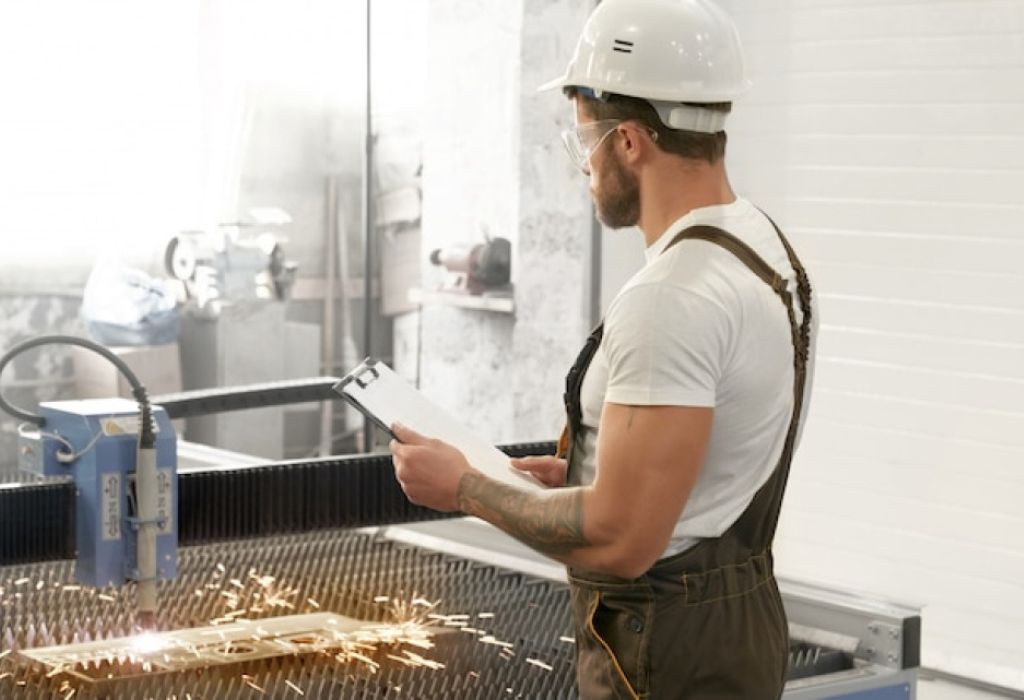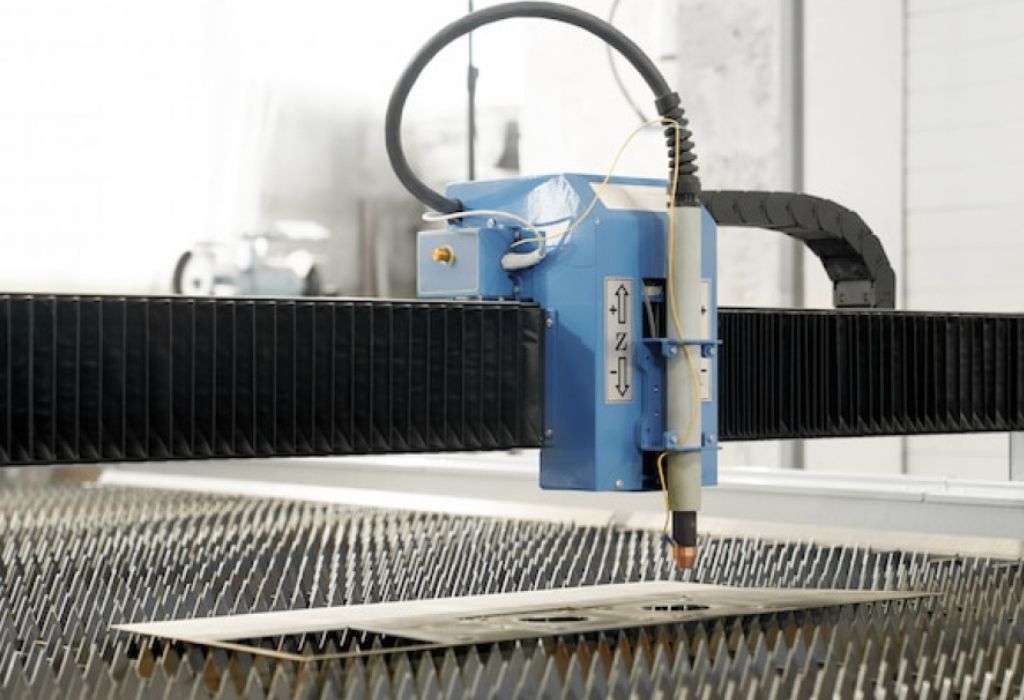A poorly adjusted MIG welding machine can turn a simple project into a frustrating experience.
Inconsistent arcs, excessive spatter, or weak welds are common problems when settings are off.
Many beginners and even experienced welders struggle to find the perfect balance between voltage, wire feed speed, and gas flow.
These small adjustments can make the difference between a strong, clean weld and a failed joint.
Understanding how to adjust MIG welding machine properly ensures consistent bead quality, prevents defects, and improves penetration.
It also saves time, reduces material waste, and enhances safety during welding operations.
According to a 2023 Lincoln Electric survey, nearly 60% of welding defects in DIY or small workshop settings are caused by incorrect machine settings (Lincoln Electric).
This highlights the importance of mastering the machine before starting any project.
This guide will walk you through step-by-step adjustments, including voltage, wire feed, gas flow, and amperage settings.
By following these techniques, you can achieve professional-quality welds, even on your first few attempts.
Whether you are welding steel, stainless steel, or aluminum, understanding your MIG welder is crucial for safety and performance.
Read on to learn how to fine-tune your MIG welding machine for optimal results every time.
Understanding MIG Welding Machines

What Is a MIG Welding Machine?
A MIG welding machine, or Metal Inert Gas welder, uses a consumable wire electrode and shielding gas to create an electric arc for fusion.
Its main components include the wire feeder, welding gun, power supply, and shielding gas system.
What does MIG stand for?
Metal Inert Gas, referring to the shielding process used to protect the weld pool.
How does a MIG welder work?
It feeds a wire through the gun while electricity melts it into the base metal.
What metals can be welded with MIG?
Steel, stainless steel, aluminum, and some alloys.
What is the role of shielding gas?
It prevents contamination of the molten weld pool.
Are all MIG welders the same?
No — machines vary in power, duty cycle, and wire feed mechanism.
Why Correct Adjustment Matters
Incorrect settings can cause spatter, poor penetration, or burn-through.
Proper adjustment ensures strong, clean beads and minimal defects.
What happens if wire feed speed is too high?
It produces excessive spatter and a narrow weld bead.
What if voltage is too low?
The weld lacks penetration and may be weak.
Can wrong gas flow damage the weld?
Yes — insufficient shielding allows contamination and porosity.
Does metal thickness affect settings?
Yes — thicker metal requires higher voltage and wire feed.
Is adjustment important for beginners?
Yes — mastering settings improves weld quality and safety.
Key MIG Welder Settings
Voltage Adjustment
Voltage controls arc length and penetration depth.
Different metals and joint types require different voltage levels.
How do you set voltage for thin metal?
Lower voltage prevents burn-through.
What voltage for thick steel?
Higher voltage ensures proper penetration.
Does voltage affect spatter?
Yes — too high voltage increases spatter.
Can I adjust while welding?
Some machines allow on-the-fly adjustments.
Is there a standard voltage chart?
Yes — manufacturers provide a reference for wire diameter and metal thickness.
Wire Feed Speed
Wire feed determines deposition rate and bead width.
It must be balanced with voltage for a smooth arc.
What happens if wire feed is too slow?
The weld bead is underfilled and may cause burn-back.
What if wire feed is too fast?
It causes spatter and wire tangling.
How to test optimal wire speed?
Run a test bead on scrap metal until arc is stable.
Does wire diameter matter?
Yes — thicker wire requires higher feed speed.
Are settings different for aluminum?
Yes — softer metals need careful feed control to prevent birdnesting.
Gas Flow Adjustment
Shielding gas protects weld quality and prevents oxidation.
Flow rates depend on gas type, nozzle size, and welding position.
What is the typical gas flow for MIG?
Around 20–25 CFH for most applications.
What if flow is too low?
Porosity and weak welds occur.
What if flow is too high?
Turbulence can pull in air, causing defects.
Does welding position affect flow?
Yes — overhead welding may require higher flow.
Which gases are used?
Argon, CO2, or blends depending on metal type.
Amperage / Current Settings
Amperage influences penetration and bead size.
It must match wire type and voltage.
How to choose the right amperage?
Based on metal thickness and wire diameter.
What if amperage is too high?
Burn-through and spatter increase.
What if amperage is too low?
Shallow weld and poor fusion occur.
Can amperage be adjusted during welding?
Some machines allow ramping, others require stopping.
Does polarity affect amperage?
Yes — DCEP or DCEN affects heat and penetration.
Step-by-Step Guide to Adjusting Your MIG Welder
Preparing the Machine
Ensure proper grounding and a clean work surface.
Install correct wire and check gas cylinder pressure.
Should the wire be tight in the feeder?
Yes — loose wire causes feed issues.
Do I need to purge the gas line?
Yes — it removes trapped air.
Is nozzle cleanliness important?
Absolutely — a dirty nozzle reduces gas coverage.
Should voltage be set before starting?
Yes — ensures initial bead stability.
Do I need PPE before adjustment?
Yes — welding helmet, gloves, and protective clothing.
Adjusting Voltage and Wire Speed
Start with manufacturer-recommended settings for the metal and wire size.
Run a test bead on scrap material and fine-tune until arc is stable.
How to know if voltage is correct?
Smooth arc with minimal spatter.
What if the bead is convex?
Increase wire feed or reduce voltage slightly.
What if bead is concave?
Increase voltage for proper penetration.
Should settings differ for corners?
Yes — adjust for travel speed and joint geometry.
Is trial and error normal?
Yes — testing on scrap prevents mistakes on actual workpieces.
Checking Gas Flow and Amperage
Confirm gas flow using a flowmeter and adjust the regulator.
Adjust amperage for bead profile and penetration.
How to test gas coverage?
Look for porosity-free welds in a test bead.
Does amperage interact with wire feed?
Yes — balance is needed for optimal arc.
Can gas leaks affect settings?
Yes — leaks reduce shielding and weld quality.
Should gas be left on between welds?
Yes — prevents contamination.
How often should adjustments be checked?
Each new setup or metal type.
Common Mistakes and Troubleshooting

Common mistakes include wrong voltage, wire feed, gas flow, or travel speed.
Results include spatter, burn-through, weak welds, and uneven beads.
Why does my weld spatter excessively?
Check wire feed, voltage, and gas coverage.
What causes burn-through?
Voltage or amperage too high for the material thickness.
Why is the bead uneven?
Travel speed or wire feed is inconsistent.
Why does the wire jam?
Incorrect tension or wrong wire size.
How to fix porosity?
Ensure proper gas coverage and clean metal surface.
Maintenance Tips for Optimal Performance
Clean nozzle and contact tip regularly.
Check gas hoses, wire feed rollers, and grounding clamps.
Store wire and gas safely to prevent contamination.
How often to clean nozzle?
After each welding session or if spatter accumulates.
Should contact tips be replaced?
Yes — worn tips cause erratic wire feeding.
How to prevent wire tangling?
Keep spool secure and aligned with the feeder.
Is gas leak testing necessary?
Yes — before each session for safety.
Should machine be serviced professionally?
Annually for heavy use or if performance declines.
Conclusion & Call-to-Action
Proper adjustment ensures clean, strong MIG welds.
Understanding how to adjust MIG welding machine improves penetration, reduces spatter, and prevents defects.
Test settings on scrap metal, maintain equipment, and follow safety guidelines.
Regular adjustment and maintenance guarantee consistent, professional-quality welds every time.

I’m Darrell Julian, the founder, lead writer, and hands-on welding enthusiast behind ArcWeldingPro.com. With more than 15 years of real-world welding experience, I created this platform to share what I’ve learned in the field, in the shop, and in the heat of the arc.


